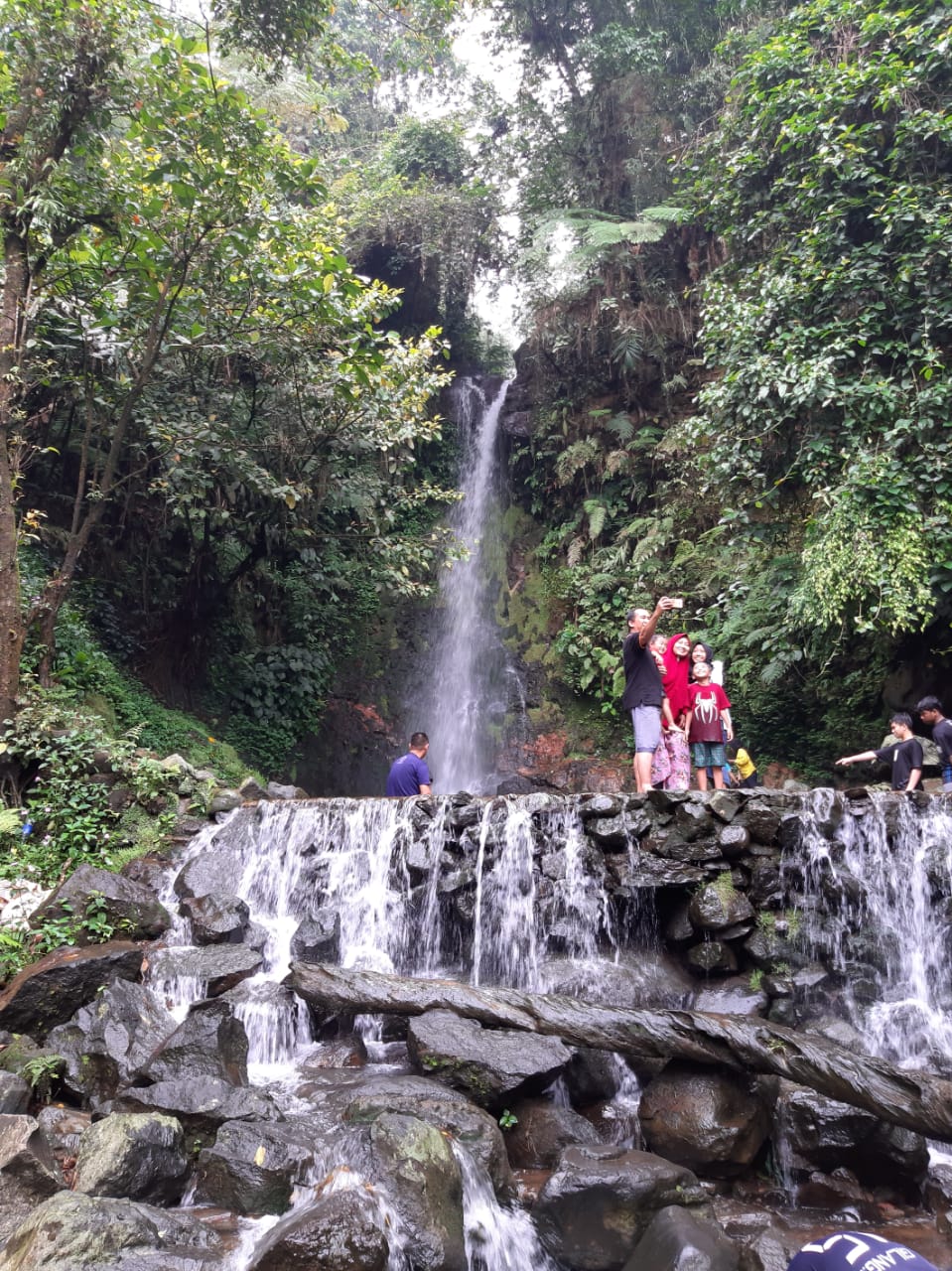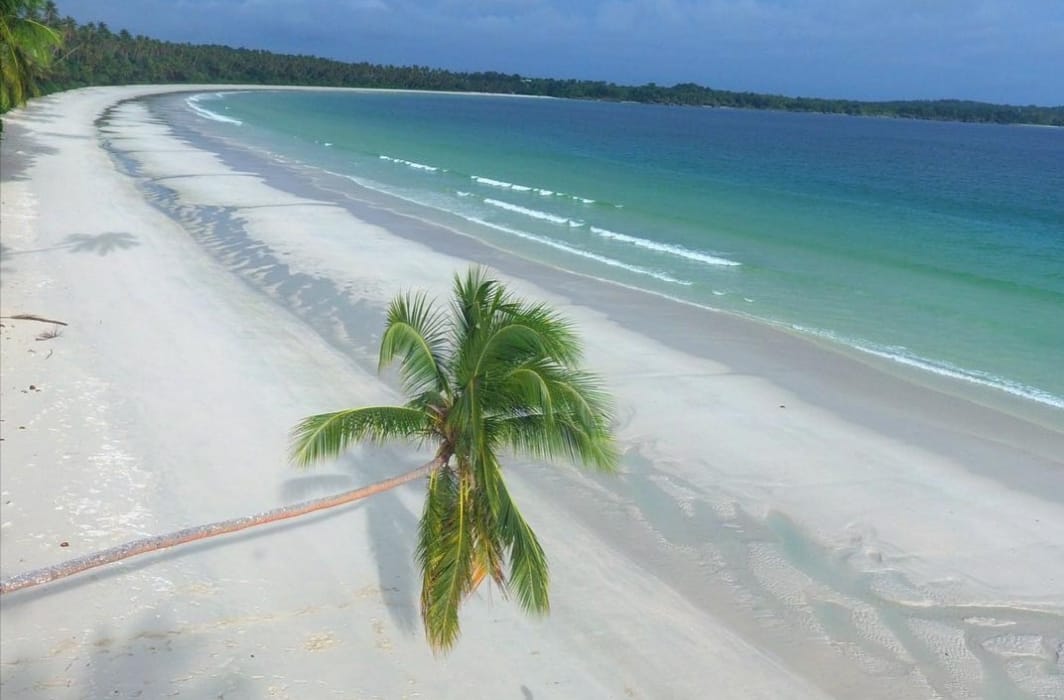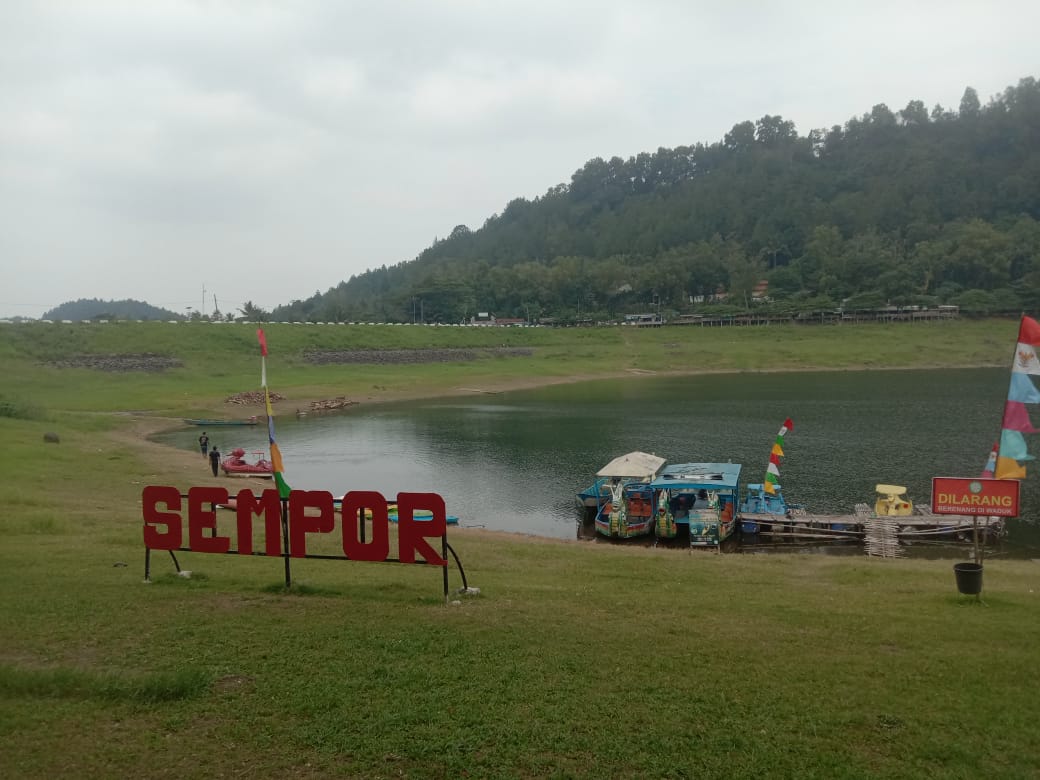Polarization among Stakeholders Perception on the Interpretation of Ecotourism Resources in Gunung Halimun Salak National Park
Abstract
The study of polarization of stakeholder perceptions is important to consider the policies that must be taken by area managers related to the development of interpretation programs in national park areas. This study was aimed to analyze and evaluate the characteristics of the subject of interpretation that are considered important by stakeholders, to analyze the differences in perceptions among stakeholders of the attractiveness of the subject of interpretation and to determine the polarization of perceptions of the subject of interpretation among stakeholders in relation to the management of Gunung Halimun Salak National Park (GHSNP). Stakeholder perception data was obtained by distributing a closed pattern questionnaire. Cluster analysis was used to determine the variety of stakeholder perception in interpretation subjects within the GHSNP area. As for knowing the direction and scale of the polarization of stakeholder perceptions, it was analyzed by Kruskal Wallis and Mann Whitney test. The results showed that the largest polarization among stakeholders occurred in the cultural subjects, and the direction of polarization was negative. This indicates the weak attractiveness of the subject of cultural interpretation to stakeholders. The greater commonality of perception between the community and managers forms the basis for the development of cultural interpretations. This development is expected to bridge the community's needs for the GHSNP area as well as provide stronger support for the management of the national park area.
References
Ababneh, A. (2018). Tour guides and heritage interpretation: guides’ interpretation of the past at the archaeological site of Jarash, Jordan. Journal of Heritage Tourism, 13(3), 257–272. https://doi.org/10.1080/1743873X.2017.1321003
Alikodra, H.S. (2012). Konservasi sumberdaya alam dan lingkungan, pendekatan ecosophy bagi penyelamatan bumi (Efransjah, D Darusman eds.). Yogyakarta: Gadjah Mada University Press.
Avenzora R. (2008). Ekoturisme: Teori dan Praktek. BRR-NAD-Nias.
Ballantyne, R., Hughes, K., Lee, J., Packer, J., & Sneddon, J. (2021). Facilitating zoo/aquarium visitors’ adoption of environmentally sustainable behaviour: Developing a values-based interpretation matrix. Tourism Management, 84(October 2020), 104243. https://doi.org/10.1016/j.tourman.2020.104243
Ballantyne, R., Packer, J., & Hughes, K. (2008). Environmental awareness, interests and motives of botanic gardens visitors: Implications for interpretive practice. Tourism Management, 29(3), 439–444. https://doi.org/10.1016/j.tourman.2007.05.006
Beattie, J. M., & Schneider, I. E. (2018). Does service type influence satisfaction?: A case study of Edinburgh Castle. Tourism Management, 67, 89–97. https://doi.org/10.1016/j.tourman.2018.01.005
Begon M., Townsend C.R., & Harper J.L. (2006). Ecology: from individuals to ecosystems (fourth ed). Blackwell Publishing Ltd.
Bhandari K. (2011). Tourism or conservation? A controversy in chitwan national park, nepal. In Muofakkir O & Burns PM (eds.) Controversies in Tourism. Oxfordshire-Cambridge: CAB Publisihing.
[BTNGHS] Balai Taman Nasional Gunung Halimun Salak. (2017). Rencana Pengelolaan Jangka Panjang Taman Nasional Gunung Halimun Salak Tahun 2018–2027. Kabandungan: Direktorat Jenderal Konservasi Sumber Daya Alam Dan Ekosistem - Kementerian Lingkungan Hidup dan Kehutanan.
Bowan, D., & Dallam, G. (2020). Building bridges: overview of an international sustainable tourism education model. Journal of Teaching in Travel and Tourism, 20(3), 202–215. https://doi.org/10.1080/15313220.2020.1797609
Brown, A. L., & Muhar, A. (2004). An approach to the acoustic design of outdoor space. Journal of Environmental Planning and Management, 47(6), 827–842. https://doi.org/10.1080/0964056042000284857
Bushell, R., & Bricker, K. (2017). Tourism in protected areas: Developing meaningful standards. Tourism and Hospitality Research, 17(1), 106–120. https://doi.org/10.1177/1467358416636173
Cochrane J. (2000). National parks in Indonesia - an alien construct. In W. Frost & C.M. Hall (eds.) Tourism and national parks - international perspectives on development, histories and change (pp. 211-224). London-New York: Routledge.
Cooley, S. J., Jones, C. R., Kurtz, A., & Robertson, N. (2020). ‘Into the Wild’: A meta-synthesis of talking therapy in natural outdoor spaces. Clinical Psychology Review, 77(March), 101841. https://doi.org/10.1016/j.cpr.2020.101841
Cornelisse, M. (2020). Sustainability in Ylläs: one focus, various interpretations. Journal of Tourism Futures, 6(1), 40–56. https://doi.org/10.1108/JTF-01-2019-0003
Cosco, N. G., Moore, R. C., & Islam, M. Z. (2010). Behavior mapping: A method for linking preschool physical activity and outdoor design. Medicine and Science in Sports and Exercise, 42(3), 513–519. https://doi.org/10.1249/MSS.0b013e3181cea27a
De Bastiani, A., Nervo, M. H., Singer, R. B., & Buzatto, C. R. (2020). One or two species? Floral characteristics and pollination biology aid in Sinningia (Gesneriaceae) species circumscription. Flora: Morphology, Distribution, Functional Ecology of Plants, 271(July), 151660. https://doi.org/10.1016/j.flora.2020.151660
Dell’Eva, M., Nava, C. R., & Osti, L. (2020). Perceptions and satisfaction of human–animal encounters in protected areas. Worldwide Hospitality and Tourism Themes, 12(4), 441–458. https://doi.org/10.1108/WHATT-05-2020-0024
Dileep Kumar, M., Govindarajo, N.S., & Khen, M.H.S. (2020). Effect of service quality on visitor satisfaction. destination image and destination loyalty – practical. theoretical and policy implications to avitourism. International Journal of Culture, Tourism, and Hospitality Research, 14(1):83–101. doi:10.1108/IJCTHR-04-2019-0066.
Djatmiko, A., Syarifuddin, D., Raharja, A. B., & Fitriani, S. A. (2021). Assessment of local communities capacities on developing ethnographic tourism of Kampung Naga, West Java, Indonesia. IOP Conference Series: Earth and Environmental Science, 737(1). https://doi.org/10.1088/1755-1315/737/1/012059
Dwyer L, Gill A, & Seetaram N. (2012). Handbook of Research Methods in Tourism – Quantitative and Qualitative Approaches. Cheltelham: Edward Elgar Publishing Inc.
Dybsand, H. N. H., & Fredman, P. (2021). The wildlife watching experiencescape: the case of musk ox safaris at Dovrefjell-Sunndalsfjella National Park, Norway. Scandinavian Journal of Hospitality and Tourism, 21(2), 148–168. https://doi.org/10.1080/15022250.2020.1850347
Eagles, P., & McCool, S. (2000). Tourism in national parks and protected area. New York: CABI Publisihing.
Elwell, T. L., López-Carr, D., Gelcich, S., & Gaines, S. D. (2020). The importance of cultural ecosystem services in natural resource-dependent communities: Implications for management. Ecosystem Services, 44(May), 101123. https://doi.org/10.1016/j.ecoser.2020.101123
Fang, C., Yamanaka, Y., & Trencher, G. (2021). Arrival briefings as an effective interpretation strategy in tourist destinations: The case of Daisetsuzan National Park, Japan. Journal of Outdoor Recreation and Tourism, 33(December 2020), 100363. https://doi.org/10.1016/j.jort.2020.100363
Farkic, J., Isailovic, G., & Taylor, S. (2021). Annals of Tourism Research Empirical Insights Forest bathing as a mindful tourism practice. Annals of Tourism Research Empirical Insights, 2(2), 100028. https://doi.org/10.1016/j.annale.2021.100028
Flower, E.K., Burns, G.L., & Jones, D.N. 2021. How tourist preference and satisfaction can contribute to improved welfare standards at elephant tourism venues in thailand. Animals. 11(4):1–17. doi:10.3390/ani11041094.
Gao, J., Zhang, C., & Huang, Z. (Joy). (2018). Chinese tourists’ views of nature and natural landscape interpretation: a generational perspective. Journal of Sustainable Tourism, 26(4), 668–684. https://doi.org/10.1080/09669582.2017.1377722
Gao, J., Zhang, C., & Liu, L. (2020). Communicating the outstanding universal value of World Heritage in China? The tour guides’ perspective. Asia Pacific Journal of Tourism Research, 25(9), 1042–1055. https://doi.org/10.1080/10941665.2018.1564340
Girard, L. F., & Vecco, M. (2021). The “intrinsic value” of cultural heritage as driver for circular human‐centered adaptive reuse. Sustainability (Switzerland), 13(6), 1–28. https://doi.org/10.3390/su13063231
Gunara, S., Sutanto, T. S., & Cipta, F. (2019). Local knowledge system of Kampung Naga: A study to investigate the educational values of indigenous people in transmitting religious and cultural values. International Journal of Instruction, 12(3), 219–236. https://doi.org/10.29333/iji.2019.12314a
Hausmann, A., Toivonen, T., Fink, C., Heikinheimo, V., Kulkarni, R., Tenkanen, H., & Di Minin, E. (2020). Understanding sentiment of national park visitors from social media data. People and Nature, 2(3), 750–760. https://doi.org/10.1002/pan3.10130
Hearne, R. R., & Salinas, Z. M. (2002). The use of choice experiments in the analysis of tourist preferences for ecotourism development in Costa Rica. Journal of Environmental Management, 65(2), 153–163. https://doi.org/10.1006/jema.2001.0541
Hudson, B. J. (2016). Waterfalls and the Romantic traveller. Geological Society Special Publication, 417(1), 41–57. https://doi.org/10.1144/SP417.9
Indrawan M., Primack R.B., & Supriatna J. (2007). Biologi konservasi (revised ed.). Jakarta: Yayasan Obor Indonesia.
Ishibashi, S., Akasaka, M., Koyanagi, T. F., Yoshida, K. T., & Soga, M. (2020). Recognition of local flora and fauna by urban park users: Who notices which species? Urban Forestry and Urban Greening, 56(September), 126867. https://doi.org/10.1016/j.ufug.2020.126867
Joa, B., Winkel, G., & Primmer, E. (2018). The unknown known – A review of local ecological knowledge in relation to forest biodiversity conservation. Land Use Policy, 79(August), 520–530. https://doi.org/10.1016/j.landusepol.2018.09.001
Kausar, D. R. K., & Gunawan, M. P. (2018). Managing heritage tourism in Toraja: strengthening local values and improving tourists’ experiences. Journal of Heritage Tourism, 13(6), 550–561. https://doi.org/10.1080/1743873X.2017.1411356
Keraf, AS. 2002. Etika Lingkungan. Jakarta: Penerbit Buku Kompas.
Kim, A. K., & Coghlan, A. (2018). Promoting site-specific versus general proenvironmental behavioral intentions: The role of interpretation. Tourism Analysis, 23(1), 77–91. https://doi.org/10.3727/108354218X15143857349503
Kuo, I.-L. (2002). The effectiveness of environmental interpretation at resource-Sensitive tourism destinations. International Journal of Tourism Research, 4(2), 87–101. https://doi.org/10.1002/jtr.362
Lane, J. M., & Stoltman, J. P. (2017). Guided educational tourism as informal physical geography education on St. Helena Island, Michigan. Journal of Geography, 116(3), 119–126. https://doi.org/10.1080/00221341.2016.1206953
Lennon, J. J., & Tiberghien, G. (2021). Ambiguity and dilution in Kazakhstan’s Gulag heritage. Tourism Recreation Research, 0(0), 1–13. https://doi.org/10.1080/02508281.2021.1875681
Lonardi, S., Martini, U., & Hull, J. S. (2020). Minority languages as sustainable tourism resources: From Indigenous groups in British Columbia (Canada) to Cimbrian people in Giazza (Italy). Annals of Tourism Research, 83(October 2019), 102859. https://doi.org/10.1016/j.annals.2020.102859
López-Guzmán, T., Torres Naranjo, M., Pérez Gálvez, J. C., & Carvache Franco, W. (2019). Segmentation and motivation of foreign tourists in world heritage sites. A case study, Quito (Ecuador). Current Issues in Tourism, 22(10), 1170–1189. https://doi.org/10.1080/13683500.2017.1344625
Lück, M. (2016). The teachable moments on marine mammal tours: Watching versus swim-with tours. Coastal Management, 44(2), 131–138. https://doi.org/10.1080/08920753.2016.1135274
Madin, E. M. P., & Fenton, D. M. (2004). Environmental interpretation in the great barrier reef marine park: An assessment of programme effectiveness. Journal of Sustainable Tourism, 12(2), 121–137. https://doi.org/10.1080/09669580408667228
Manning, R. E., & Anderson, L. E. (2012). Managing outdoor recreation : case studies in the national parks. Oxfordshire-Cambridge: CABI Publishing.
Marschall, S., Granquist, S. M., & Burns, G. L. (2017). Interpretation in wildlife tourism: Assessing the effectiveness of signage on visitor behaviour at a seal watching site in Iceland. Journal of Outdoor Recreation and Tourism, 17(October 2016), 11–19. https://doi.org/10.1016/j.jort.2016.11.001
Mavhura, E., & Mushure, S. (2019). Forest and wildlife resource-conservation efforts based on indigenous knowledge: The case of Nharira community in Chikomba district, Zimbabwe. Forest Policy and Economics, 105(January), 83–90. https://doi.org/10.1016/j.forpol.2019.05.019
Mayaka, M., Croy, W. G., & Cox, J. W. (2018). Participation as motif in community-based tourism: a practice perspective. Journal of Sustainable Tourism, 26(3), 416–432. https://doi.org/10.1080/09669582.2017.1359278
McIntosh AJ, & Johnson, H. (2005). Understanding the nature of the Marae experience: views from hosts and visitors at the Nga Hau E Wha national Marae, Christchurch, New Zealand. In C. Ryan & M. Aicken (eds.) Indigenous tourism: The commodification and management of culture (pp. 35-50). Elsevier Ltd. https://doi.org/10.4324/9780080914008
Meilani, M. M., Andayani, W., Faida, L. R. W., & Maryudi, A. (2019). Ecotourism in Sebangau National Park: An avenue to enhance local community livelihoods while protecting the ecosystem. IOP Conference Series: Earth and Environmental Science, 399(1). https://doi.org/10.1088/1755-1315/399/1/012112
Mocior, E., & Kruse, M. (2016). Educational values and services of ecosystems and landscapes - An overview. Ecological Indicators, 60, 137–151. https://doi.org/10.1016/j.ecolind.2015.06.031
Moscardo, G. (2017). Exploring mindfulness and stories in tourist experiences. International Journal of Culture, Tourism, and Hospitality Research, 11(2), 111–124. https://doi.org/10.1108/IJCTHR-11-2016-0108
Muneenam, U., Suwannattachote, P., & Mustikasari, R. S. (2017). Interpretation of shared culture of Baba and Nyonya for tourism linkage of four countries in the ASEAN community. Kasetsart Journal of Social Sciences, 38(3), 251–258. https://doi.org/10.1016/j.kjss.2016.08.015
Murti, D. C. W. (2019). Locating nation in a village: Fusion of local and nation voices in Penglipuran Bali, Indonesia. International Journal of Tourism Anthropology, 7(2), 157–177. https://doi.org/10.1504/IJTA.2019.101244
Mutanga, C. N., Vengesayi, S., Chikuta, O., Muboko, N., & Gandiwa, E. (2017). Travel motivation and tourist satisfaction with wildlife tourism experiences in Gonarezhou and Matusadona National Parks, Zimbabwe. Journal of Outdoor Recreation and Tourism, 20(August), 1–18. https://doi.org/10.1016/j.jort.2017.08.001
Mutiara, M. M., Rachmawati, E., & Sunkar, A. (2021). Effectivity assessment of interpretive signs for biodiversity conservation. IOP Conference Series: Earth and Environmental Science, 739(1). https://doi.org/10.1088/1755-1315/739/1/012066
Muzambiq, S., Walid, H., Ganie, T. H., & Hermawan, H. (2021). The Importance of Public Education and Interpretation in the Conservation of Toba Caldera Geoheritage. Geoheritage, 13(1). https://doi.org/10.1007/s12371-020-00523-x
Orams, M. B. (1996). Using interpretation to manage nature-based tourism. Journal of Sustainable Tourism, 4(2), 81–94. https://doi.org/10.1080/09669589608667260
Piccininni, C., Michaelson, V., Janssen, I., & Pickett, W. (2018). Outdoor play and nature connectedness as potential correlates of internalized mental health symptoms among Canadian adolescents. Preventive Medicine, 112(April), 168–175. https://doi.org/10.1016/j.ypmed.2018.04.020
Powell, R. B., Kellert, S. R., & Ham, S. H. (2009). Interactional theory and the sustainable nature-based tourism experience. Society and Natural Resources, 22(8), 761–776. https://doi.org/10.1080/08941920802017560
Qi, T., Zhang, G., Wang, Y., Liu, C., & Li, X. (2017). Research on landscape quality of country parks in Beijing as based on visual and audible senses. Urban Forestry and Urban Greening, 26, 124–138. https://doi.org/10.1016/j.ufug.2016.12.007
Radomskaya, V., & Pearce, P. L. (2021). Adding character: The role of destination mascots in tourism development. Tourism Management, 84(October 2020), 104248. https://doi.org/10.1016/j.tourman.2020.104248
Raimkulov, M., Juraturgunov, H., & Ahn, Y. J. (2021). Destination attractiveness and memorable travel experiences in silk road tourism in Uzbekistan. Sustainability (Switzerland), 13(4), 1–14. https://doi.org/10.3390/su13042252
Rasoolimanesh, S. M., Jaafar, M., Ahmad, A. G., & Barghi, R. (2017). Community participation in World Heritage Site conservation and tourism development. Tourism Management, 58, 142–153. https://doi.org/10.1016/j.tourman.2016.10.016
Richards, G., & Wilson, J. (2014). Creativity and Tourism in the City. Current Issues in Tourism. 17:2. 119-144. http://dx.doi.org/10.1080/13683500.2013.783794
Rivera, D. E., Fa, M. C., & Villar, A. S. (2019). Delightful tourism experiences: A cognitive or affective matter? Tourism Management Perspectives, 32(August), 100569. https://doi.org/10.1016/j.tmp.2019.100569
Servidio, R., & Ruffolo, I. (2016). Exploring the relationship between emotions and memorable tourism experiences through narratives. Tourism Management Perspectives, 20, 151–160. https://doi.org/10.1016/j.tmp.2016.07.010
Sheng, H. X., Xu, H., Zhang, L., & Chen, W. (2019). Ecosystem intrinsic value and its application in decision-making for sustainable development. Journal for Nature Conservation, 49(January), 27–36. https://doi.org/10.1016/j.jnc.2019.01.008
Sinaga, F. A., Ginting, N., & Marpaung, B. O. Y. (2020). Education aspect of the community participation on developing geotourism Bakara Village. IOP Conference Series: Earth and Environmental Science, 452(1). https://doi.org/10.1088/1755-1315/452/1/012011
Stem, C. J., Lassoie, J. P., Lee, D. R., Deshler, D. D., & Schelhas, J. W. (2003). Community participation in ecotourism benefits: The link to conservation practices and perspectives. Society and Natural Resources, 16(5), 387–413. https://doi.org/10.1080/08941920309177
Stoffle, R., Seowtewa, O., Kays, C., & Van Vlack, K. (2020). Sustainable heritage tourism: Native american preservation recommendations at arches, canyonlands, and hovenweep national parks. Sustainability (Switzerland), 12(23), 1–34. https://doi.org/10.3390/su12239846
Suryaningsih, IGAM. (2020). Perencanaan Ekowisata Budaya Kearifan Lokal Masyarakat Kasepuhan Taman Nasional Gunung Halimun Salak. [final report]. Bogor: IPB University.
Tan, K. K. H., & Choy, C. W. (2020). Re-interpreting heritage: viewing the Malay Peninsula’s colonial-era missionary monuments as public art. Journal of Heritage Tourism, 15(2), 164–179. https://doi.org/10.1080/1743873X.2019.1627361
Tang, M., Erawati, E., Nur, M., & Thosibo, A. (2020). Potential of tourism in the prehistoric caves region of Liang Kabori, Muna Regency, Southeast Sulawesi. IOP Conference Series: Earth and Environmental Science, 575(1). https://doi.org/10.1088/1755-1315/575/1/012060
Tarver, R., Cohen, K., Klyve, D., & Liseki, S. (2019). Sustainable safari practices: Proximity to wildlife, educational intervention, and the quality of experience. Journal of Outdoor Recreation and Tourism, 25(January 2018), 76–83. https://doi.org/10.1016/j.jort.2019.01.001
Tatarusanu, M., Butnaru, G. I., Nita, V., Neculaesei, A. N., & Ciortescu, E. (2021). The influence of interpretation through guiding tour, quality of reception and relics’ worship on the satisfaction of pilgrims attending the iasi feast. Sustainability (Switzerland), 13(12). https://doi.org/10.3390/su13126905
Tauro, A., Ojeda, J., Caviness, T., Moses, K. P., Moreno-Terrazas, R., Wright, T., … Rozzi, R. (2021). Field environmental philosophy: A biocultural ethic approach to education and ecotourism for sustainability. Sustainability (Switzerland), 13(8), 1–22. https://doi.org/10.3390/su13084526
Tiberghien, G., Bremner, H., & Milne, S. (2018). Authenticating eco-cultural tourism in Kazakhstan: a supply side perspective. Journal of Ecotourism, 17(3), 306–319. https://doi.org/10.1080/14724049.2018.1502507
Tiberghien, G., & Lennon, J. J. (2019). Managing authenticity and performance in Gulag Tourism, Kazakhstan. Tourism Geographies, 0(0), 1–25. https://doi.org/10.1080/14616688.2019.1674371
Tung, V. W. S., Cheung, C., & Law, R. (2018). Does the Listener Matter? The Effects of Capitalization on Storytellers’ Evaluations of Travel Memories. Journal of Travel Research, 57(8), 1133–1145. https://doi.org/10.1177/0047287517729759
Vanermen, I., Muys, B., Verheyen, K., Vanwindekens, F., Bouriaud, L., Kardol, P., & Vranken, L. (2020). What do scientists and managers know about soil biodiversity? Comparative knowledge mapping for sustainable forest management. Forest Policy and Economics, 119(October 2019), 102264. https://doi.org/10.1016/j.forpol.2020.102264
Vásquez Lavín, F., Gelcich, S., Paz Lerdón, X., & Montealegre Bustos, F. (2016). The role of information in changing tourists behavioral preferences at the Humboldt penguin reserve in northern Chile. Ocean and Coastal Management, 125, 63–69. https://doi.org/10.1016/j.ocecoaman.2016.03.003
Villamediana-Pedrosa, J. D., Vila-López, N., & Küster-Boluda, I. (2020). Predictors of tourist engagement: Travel motives and tourism destination profiles. Journal of Destination Marketing and Management, 16(July 2019), 100412. https://doi.org/10.1016/j.jdmm.2020.100412
Vitasurya, V. R. (2016). Local Wisdom for Sustainable Development of Rural Tourism, Case on Kalibiru and Lopati Village, Province of Daerah Istimewa Yogyakarta. Procedia - Social and Behavioral Sciences, 216(October 2015), 97–108. https://doi.org/10.1016/j.sbspro.2015.12.014
Wang, L., Tian, M., & Wang, L. (2015). Geodiversity, geoconservation and geotourism in Hong Kong Global Geopark of China. Proceedings of the Geologists’ Association, 126(3), 426–437. https://doi.org/10.1016/j.pgeola.2015.02.006
Wearing S., & Neil, J. (1999). Ecotourism: Impacts, potentials and possibilities. Oxford: Butterworth-Heinemann, Linacre House, Jordan Hill.
White, N.E, Buultjens, J., & Shoebridge, A. (2013). Complex interrelationships between ecotourism and indigenous peoples. In R. Ballantyne & J. Packer (eds.) International handbook on ecotourism (pp. 78-94). Cheltenham: Edward Elgar Publishing Limited.
Wolf, I. D., & Croft, D. B. (2012). Observation techniques that minimize impacts on wildlife and maximize visitor satisfaction in night-time tours. Tourism Management Perspectives, 4, 164–175. https://doi.org/10.1016/j.tmp.2012.08.002
Woźniak, E., Kulczyk, S., & Derek, M. (2018). From intrinsic to service potential: An approach to assess tourism landscape potential. Landscape and Urban Planning, 170(March 2017), 209–220. https://doi.org/10.1016/j.landurbplan.2017.10.006
Xiang, X., Zheng, B., & Feng, D. (2020). Interpreting impoliteness and over-politeness: An investigation into interpreters’ cognitive effort, coping strategies and their effects. Journal of Pragmatics, 169, 231–244. https://doi.org/10.1016/j.pragma.2020.09.021
Zhu, L., Davis, L. S., & Carr, A. (2021). Visualising natural attractions within national parks: Preferences of tourists for photographs with different visual characteristics. Plos One, 16(6), e0252661. https://doi.org/10.1371/journal.pone.0252661
Authors

This work is licensed under a Creative Commons Attribution 4.0 International License.
Jurnal Manajemen Hutan Tropika is an open access journal which means that all contents is freely available without charge to the user or his/her institution. Users are allowed to read, download, copy, distribute, print, search, or link to the full texts of the articles in this journal without asking prior permission from the publisher or the author. This is in accordance with the Budapest Open Access Initiative (BOAI) definition of open access.









